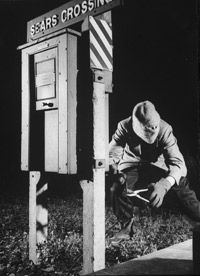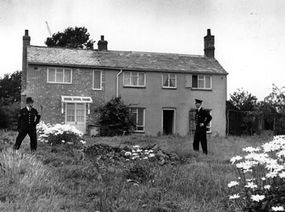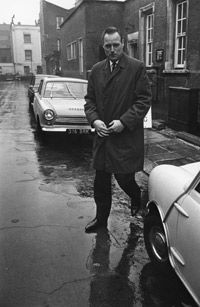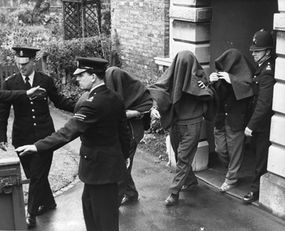Because the gang had planned to escape the Aylesbury prison, they were watched closely until their trial began. On Jan. 20, 1964, they appeared before Justice Edmund Davies at Buckinghamshire Assizes. Ronnie Biggs, Tommy Wisbey, Charlie Wilson, Roy James, Bob Welch, Gordon Goody, Leonard Field, Brian Field, William Boal, and John Wheater all plead not guilty. Roger Cordrey was the only man to plead guilty and gave back his share of the money -- £80,000.
Two weeks into the trial, evidence surfaced that showed Biggs had a criminal record. Fearing this could sway the jury, the judge halted the trial and ordered Biggs to stand trial at a later date.
The trial went on for months and included testimony from bank officials and the train driver, Jack Mills, who took the stand and told the story of the robbery and the injury so severe he wasn't able to continue working. John Daly, who was implicated because his fingerprints were found on the Monopoly game, was acquitted during the defense proceedings in March 1964. His lawyer petitioned that the fingerprints could have been on the game prior to it being at the farm.
On March 25, 1964, the jury found all of the accused guilty of conspiracy to rob, and Tom Wisbey, Roy James, Charlie Wilson, Bob Welch, Jim Hussey and Gordon Goody were found guilty of robbery with violence.
Sentencing wouldn't be set down until Biggs' retrial, however, which was scheduled for April 8, 1964. His retrial only took seven days, and the jury swiftly found him guilty. On April 16, 1964, sentences were handed out by Justice Davies, who was heavy-handed due to the violence against Jack Mills. The men received 30 years apiece with few exceptions. John Wheater, who arranged the safe house, received three years; Roger Cordrey received 20 years; William Boal received 24 and Brian and Leonard Field each received 25. After appeals, Cordrey and Boal's sentences were reduced to 14 years each, and Brian and Leonard Field each had their sentences reduced to five years.
Buster Edwards, Bruce Reynolds and Jimmy White were all found and jailed by 1969. Edwards fled to Mexico but turned himself in three years after the crime. After five years on the run, the mastermind Reynolds was captured and sentenced to 10 years in prison.
The robbers were placed in prisons across the country, and in August 1964, Charlie Wilson, incarcerated in Winson Green maximum-security prison, was the first of the gang to escape. He was recaptured in 1968.
Biggs was sent to Wandsworth prison -- Britain's version of Alcatraz. Only 15 months after arriving at Wandsworth, Biggs escaped in a furniture van and became Britain's most notorious fugitive. He underwent plastic surgery to disguise his face and fled to Australia and eventually Brazil, where, in 1970, he settled in as "Michael Haynes."
Biggs evaded return to the U.K. for more than three decades amidst attempts to extradite him: Once in 1974 when Slipper showed up at his door, and again in 1981 with a kidnapping attempt by British ex-military.
In 2001, an ailing Biggs, the man who had almost gotten away with it, voluntarily returned to the U.K. to serve the remaining 28 years of his sentence in a Norwich jail for elderly inmates. He outlives his rival, Jack Slipper, who passed away in 2005.
The renowned Monopoly game is on display at the Thames Valley Police Museum.
To learn more about heists, safe houses and infamous criminals, steal though the links on the next page.








